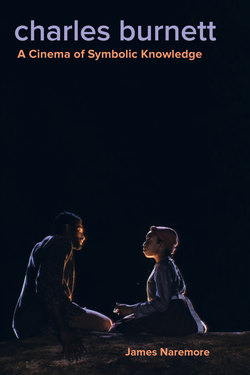Charles Burnett

Реклама. ООО «ЛитРес», ИНН: 7719571260.
Оглавление
James Naremore. Charles Burnett
Отрывок из книги
Charles Burnett
A CINEMA OF SYMBOLIC KNOWLEDGE
.....
The Horse ultimately centers on what at first seems a minor character, a young black boy who witnesses the execution of an ill and dying old horse. Beautifully photographed by Ian Connor, it has minimal dialogue and an evocative sound design by Burnett of birdsong, gusts of wind, the minatory creak of an old windmill, and a few moments of nondiegetic music (Samuel Barber’s musical setting for James Agee’s “Knoxville: Summer of 1915”). In part because of its brevity and minimalism, one might call it a symbolic film, but only in a qualified sense. Burnett was bemused when some viewers tried to decode the imagery as if they were watching a religious allegory. His symbolism, like that of Faulkner and other modern artists, is entirely in the service of a realist, albeit lyrical and relatively ambiguous, narrative; in other words, the characters in The Horse are representative of a general culture, but the meanings of their behavior are conveyed obliquely, almost mysteriously, through the connotative force and open-ended suggestiveness of images, gestures, and sounds.
The opening shot provides a kind of signifying map for the entire action. From atop a high hill on a clear, sunny day we look down at a distant car moving along a winding, fenced road and turning into the dusty drive of a dark, dilapidated house. The landscape on the far horizon is mountainous, clearly Californian rather than southern, but the decayed house down below suggests a vaguely Faulkneresque world of dead or dying agricultural plutocracy. There are shabby outbuildings behind the house and a large, dry field in front, where we can make out the tiny, isolated figures of a horse, a boy, and a man. The car stops, and three men get out and walk toward the house.
.....